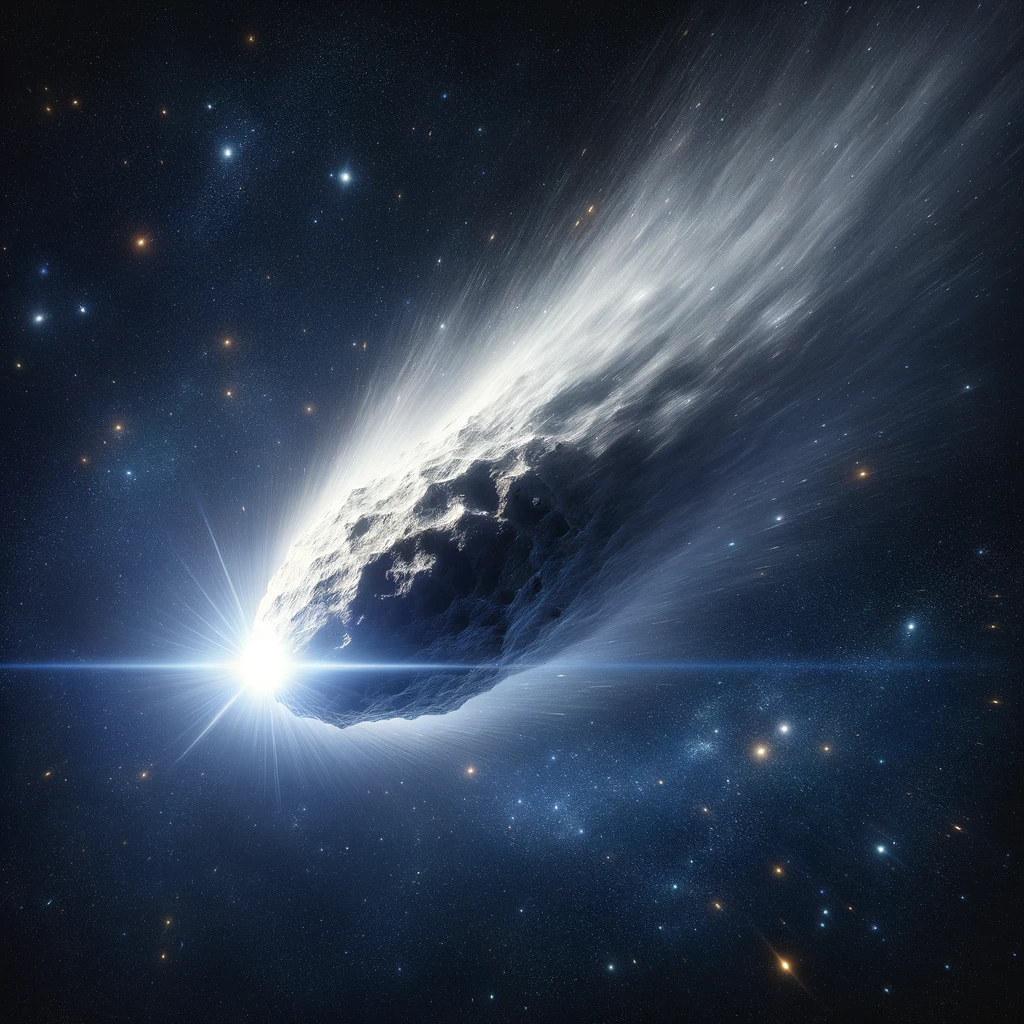Comets: Celestial Harbingers of the Cosmos
Comets are enigmatic cosmic travelers with origins in the coldest, most distant parts of our solar system. This post delves into the journey of comets, tracing their path from the remote regions of the Kuiper Belt and Oort Cloud to their spectacular appearances near the Sun.
Origins in the Outer Solar System
Comets begin their journey in the distant realms of the Kuiper Belt and Oort Cloud, where they form from the icy remnants left over after the solar system’s formation. These regions, far from the Sun, are storehouses of frozen gases, rock, and cosmic dust.
The Nature of Comets
Comets are often described as “dirty snowballs” or “icy dirtballs” due to their composition:
- Nucleus: The solid core of the comet, consisting of ice and dust.
- Coma: A cloud of gas and dust that forms around the nucleus as the comet approaches the Sun and warms up.
- Tails: Comets develop two tails, a dust tail and an ion tail, pointing away from the Sun.
The Role of Comets in Cosmic History
As remnants of the early solar system, comets provide valuable insights into its composition and evolution. Studying comets helps us understand the conditions that prevailed in the solar system’s infancy and the processes that led to the formation of planets.
Each appearance of a comet near the Sun, with its glowing coma and trailing tails, not only offers a stunning celestial spectacle but also an opportunity to study the primitive materials that have remained unchanged for billions of years.
Comets and Life on Earth
Comets have also intrigued scientists for their potential role in delivering water and organic compounds to Earth, contributing to the origins of life. As messengers from the distant past, they continue to captivate astronomers and space enthusiasts, shedding light on the mysteries of the universe.
